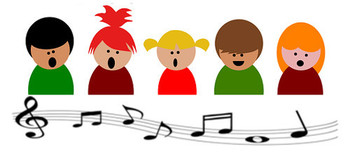
ChorTeach is ACDA’s quarterly publication for choral conductors and teachers at all levels. It is published online, and each issue contains four practical articles. If you are not already a member of ACDA, you can join and receive access to ChorTeach online. Below is an excerpt from an article written by Henry Leck an appearing in the Spring 2019 issue, available here.
_____________________________________
The following material was developed to convey, in a condensed form, some of the important elements of being a children’s choir director. By seeing these ideas as “ten commandments,” one should not construe that this writer has seen the burning bush. As we all know, teaching and conducting are a continuous process of learning and growth. Children make that process an exceptionally joyful one, for they have a tremendous intelligence and artistry within them waiting to be nurtured. If a choral director takes the time to understand the child’s voice, its subtleties and capabilities, the results can be completely rewarding artistically and personally.
1. Create good mental focus.
Rapid learning only occurs when the mind is focused. Excellent musicianship becomes apparent only when the mind is acutely sensitive to its physical and aural environment. With this level of mental intensity, the text can take on life and begin to link the singer aesthetically with the audience.
2. Teach breathing/posture techniques.
The breath is the basis of all successful singing. To shortcut this technique is to shortcut your whole choral sound. Insist on good posture while singing. Through positive exercises promoting a relaxed but erect posture, children will soon learn that it indeed is the most comfortable way to sit or stand. In a healthy choral rehearsal environment, children will very quickly acquire a habit of sitting in a “singer’s posture” automatically without being reminded.
3. Use correct vocal ranges.
Introduce vocalises and exercises in descending patterns always starting with the head voice. Promote singing in the upper part of the treble staff . Children can remember a specific pitch if it is done consistently at the beginning of every rehearsal. A good choice is c’ (an octave above middle c). By starting on this pitch, the children automatically begin singing in head voice and thus are given a tonal anchor which is immensely helpful to them as musicians. By developing the voice from the head voice down, the singer is given a wide tessitura with beauty and vocal consistency on both sides of the “break.”
Read more in the Spring 2019 issue at acda.org/chorteach.


Leave a Reply
You must be logged in to post a comment.